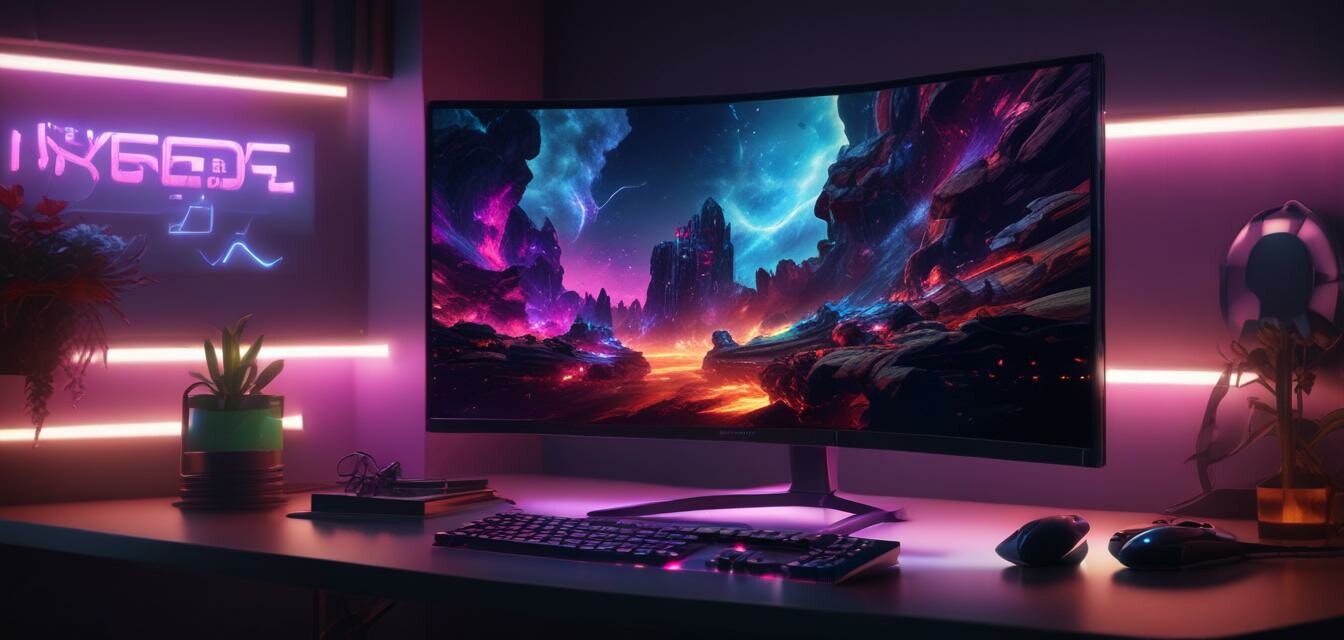
How to Choose the Perfect Curved OLED Gaming Monitor
Choosing the right curved OLED gaming monitor can significantly enhance your gaming experience. In this guide, we will explore key features to consider when selecting a monitor, including size, resolution, and curvature. With this information, you can make a well-informed decision tailored to your gaming needs.
Key Takeaways
- Consider the screen size for immersive gaming.
- Resolution affects image detail; 4K offers the best clarity.
- The curvature of the monitor enhances the field of view.
- Look for features like G-Sync and FreeSync for smoother gameplay.
- Evaluate your budget to find the best options suited to your needs.
Why Choose a Curved OLED Gaming Monitor?
Curved OLED gaming monitors offer several advantages that can greatly enhance your gaming experience:
- Immersive Experience: Curved screens provide a wider field of view, allowing you to be more engaged in your games.
- Improved Depth of Field: The curvature adds a sense of depth, making game graphics naturally more engaging.
- Reduced Eye Strain: The design enables a more consistent focus across the screen, reducing craning of the neck and eye fatigue.
Key Features to Consider
When selecting a curved OLED gaming monitor, here are the essential features you should evaluate:
1. Screen Size
Screen size determines how immersive your gaming experience will be. Here’s a quick size guide:
| Screen Size | Recommended Viewing Distance |
|---|---|
| 27 inches | 2.5 - 3 feet |
| 32 inches | 3 - 4 feet |
| 34 inches | 3.5 - 4.5 feet |
| 49 inches | 4 - 6 feet |
2. Resolution
The resolution of a monitor directly affects the clarity of images. Common resolutions include:
- Full HD (1920 x 1080): Basic clarity suitable for casual gaming.
- Quad HD (2560 x 1440): Higher clarity, recommended for competitive gaming.
- 4K UHD (3840 x 2160): Offers the best image detail, perfect for immersive experiences.
3. Curvature
The curvature of the monitor can affect how immersive and comfortable it feels. Here's a comparison of common curvature types:
| Curvature Type | Impact on Gaming |
|---|---|
| 1800R | Best for immersive gaming, closely mimicking the human eye's curve. |
| 3000R | Good for single-user applications, providing decent immersion. |
| 4000R | More for general use; less immersive but easier on the eyes during long sessions. |
4. Refresh Rate
The refresh rate determines how smooth the gameplay feels. Higher rates are preferable for competitive gaming:
- 60Hz: Standard for casual gaming.
- 120Hz: Smooth gameplay for fast-paced titles.
- 144Hz and above: Ideal for esports and professional gaming.
5. G-Sync and FreeSync
Adaptive sync technologies like G-Sync (for NVIDIA) and FreeSync (for AMD) minimize screen tearing and enhance gameplay. Choose a monitor with support for one of these technologies for a seamless gaming experience.
Budget Considerations
When selecting a curved OLED gaming monitor, it's essential to balance features with your budget. Here's a rough guide on what you can expect:
| Price Range | Typical Features |
|---|---|
| $200 - $500 | 27 inches, Full HD, basic refresh rate. |
| $500 - $1000 | 32 inches, Quad HD, higher refresh rate, G-Sync or FreeSync. |
| $1000+ | 34 inches or larger, 4K resolution, premium features and build quality. |
Pros
- Enhanced immersion thanks to curvature and size.
- Stunning visuals with OLED technology.
- Excellent refresh rates for competitive gaming.
Cons
- Curved monitors may not suit all gaming setups.
- Generally more expensive than flat monitors.
Final Thoughts
Choosing the perfect curved OLED gaming monitor involves evaluating several essential features including screen size, resolution, curvature, refresh rate, and your budget. By keeping these factors in mind, you are sure to find a monitor that enhances your gaming experience effectively. For further guidance, feel free to explore our Buying Guides section to match monitors with your specific needs.